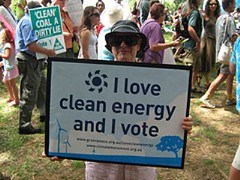People ask about greenwashing and vendor hypocrisy. I don’t see it like that. If resources are being applied to managing electricity demand, or addressing broader sustainability issues, that is all to the good. The space is heating up almost as fast as the planet.
Today IBM announced a swathe of services and tools, and is clearly beginning to tie together its various IT energy management strands. Thus for example, it touts data center efficiency:
IBM Systems Director Active Energy Manager (AEM) tracks energy consumption in data centers and helps customers monitor power usage and make adjustments to improve efficiency and reduce costs. The new software allows IT managers to control — even set caps on — their energy use for servers, storage, and networking as well as the air conditioning and power management systems that keep the data center running.
IBM is also pushing into certification. I think the firm needs to think bigger though and to take on bigger challenges (not often I say that). Data center energy optimisation is interesting, but IBM should be looking at driving power improvements in supply chains, manufacturing plants, building central heating and so on. IT currently accounts for around 3% of world energy consumption. Lets get to work on the other 97%.
Nortel is going after Cisco “ruthlessly” based on better power performance of its gear. This is the most agressive use of a energy benchmarking I have seen so far in the industry. Great – bring on competition on the basis of power consumption.
I am liking SAS pitching its BI tools for the triple bottom line. with Global Reporting Initiative indicators and KPIs based relating to environmental, social, and economic sustainability. Excellent! I need to go chat to SAS – a very interesting privately held firm with a real culture of innovation and a high R&D budget to match. I wonder if they talked about this today at the
Boston is going green, which I am sure Stephen will appreciate.
With the triple bottom line in mind The FT reported yesterday that “The German government plans to make the country’s first trademark for good business behaviour, as a complement to “Made in Germany” as a respected global brand.”
Today my old mucker Dennis Howlett has been in Boston with Business for Social Responsibility (BSR) and a number of software companies discussing sustainability rights, responsibilities and opportunities. Next week at Sapphire 2008 in Orlando, SAP is hosting AccountAbility, (BSR), and the International Business Leaders Forum (IBLF) in launching a dialogue on sustainability. I have been involved in planning, web 2.0 support, and will join the dialogue in Berlin. I’d like to see SAP in future set up industry vertical sustainability groups based on its successful Industry Value Network program, for best practice sharing. James?
GreenMonk appreciates change needs to be top down, as well as bottom up. All this of activity is goodness. We need to move on, and watching CSR evolve from a PR initiative to one driving corporate strategy is pleasing.

![]() photo credit: openDemocracy
photo credit: openDemocracy





